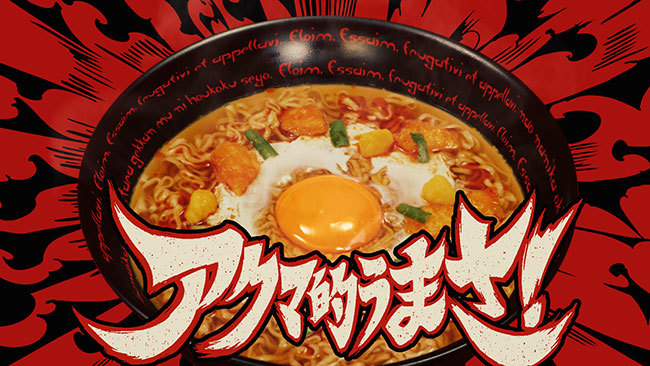Companies and local governments often have their own mascot characters. While many unique characters have emerged in recent years, some have endured for decades, becoming deeply beloved and firmly established.
An advertising campaign transforming such a long-beloved character into a "demon" became a hot topic. This was the promotion for Nissin Foods' new "Akuma no Kimura" (Devil's Kimura) three-pack with toppings for Chicken Ramen. The project, where the well-known Chicken Ramen mascot "Hiyoko-chan" suddenly transformed into a devil, won numerous advertising awards, including the Grand Prix in the Brand Experience & Engagement category at ADFEST (Asia Pacific Advertising Festival) 2019.
The person behind this project was Mr. Nagaaki Onoe (Planner, Dentsu Inc. CDC) from Dentsu Inc. What ingenuity and objectives lay behind this bold "character transformation"? We hear Mr. Onoe's thoughts throughout the project.
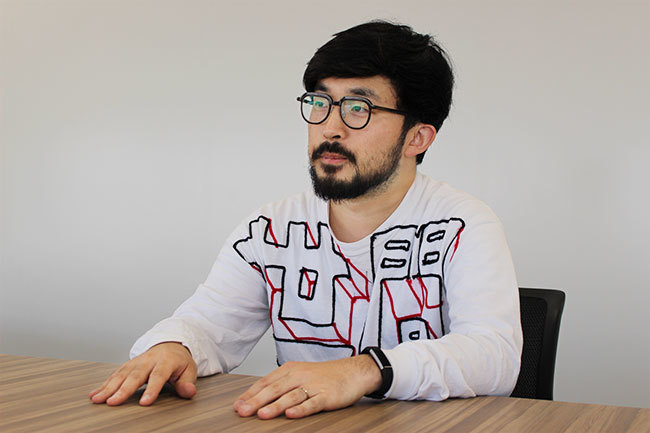
Nagaaki Onoe (Dentsu Inc. CDC)
Precisely because the character was well-established, the motivation for becoming a devil needed to be crystal clear
──How did the idea to transform Chick-chan into a demon come about?
Actually, it came up during our very first meeting with Nissin Foods. Chicken Ramen has such a long history that it tended to be favored by families and relatively older demographics. So there was a desire to create a stimulating product like "Akuma no Kimura" to attract younger people.
The president was present at the presentation, and he was very enthusiastic about the idea. The discussion immediately heated up around the concept of "transforming the chick into a demon." That formed the basis of the plan. We also thought it would be interesting to arrange the Chicken Ramen commercial song into a hard rock style, intense track to match the transformation.
Taking that idea back, we decided under Creative Director Yukita Higashihata to depict the moment the chick transforms into a demon in the commercial. When you pour the "Akuma no Kimura" instant noodles into a bowl and hold it up to the sky, a demon is summoned, and the chick transforms. This was because we had proposed the keyword "Summoned in 3 Minutes" during the presentation and wanted to express that. We wanted to give the act of eating the instant noodles a name. Naming it would make it easier to tweet about on social media. We also incorporated the previously mentioned music idea.
However, this alone would make Hiyoko-chan's transformation seem abrupt and out of context. Since she's a long-established character, fans might find it hard to accept if it felt too sudden. So, I decided to prepare a backstory explaining the reason and process behind the transformation.
The key point is Hiyoko-chan's motivation for becoming a demon. What I've always found melancholic is that the Chicken Ramen commercials feature Hiyoko-chan, a chick, as the star (laughs). Furthermore, when I looked at a character book about Hiyoko-chan published years ago, I saw her making meringue. Isn't that terrifying? (laughs) So, I decided to use this element.
Criticism arises from "unclear parts, ambiguous elements"
──Please tell us how you depicted the transformation story.
Back then, there were many cases in society where people accidentally posted private tweets from their official Twitter accounts. I thought if Chick-chan did that, it would get attention. In other words, if Chick-chan, who had only ever tweeted nice things, suddenly started making wild, angry statements, it would definitely stand out.
First, Hiyoko-chan tweeted a shriek like "KUEEEEEEEEEEEEEEEEEEEEEEEEEEEEEEEEEEEEEEEEEEEEEEEEEEEEEEEEEEEEEEEEEEEEEEEEEEEEEEEEEEEEEEEEEEEEEEEEEEEEEEEEEEEEEEEEEEEEEEEEEEEEEEEEEEEEEEEEEEEEEEEEEEEEEEEEEEEEEEEEEEEEEEEEEEEEEEEEEEEEEEEEEEEEEEEEEEEEEEEEEEEEEEEEEEEEEEEEEEEEEEEEEEEEEEEEEEEEEEEEEEEEEEEEEEEEEEE
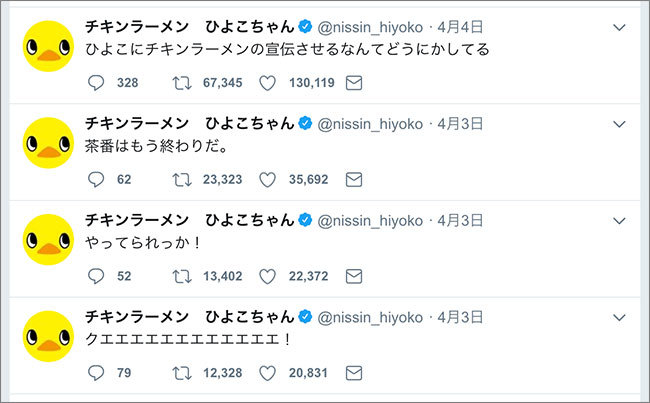
From the official Twitter account
Fans who saw these tweets and got curious would go to the Chicken Ramen site, where they'd find Pupu-chan had submitted a resignation letter stating, "I hereby resign from being a good little chick."
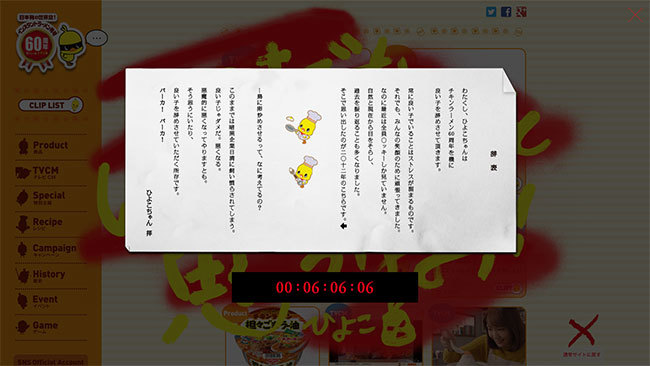
Chick-chan Resignation
Furthermore, Pui-chan drew graffiti on other Nissin product pages. On the special site, with the cooperation of "Moo" magazine—known for occult and mystery content—they published material examining and explaining the process and factors behind Pui-chan becoming a demon. They added background and story to the transformation. According to "Moo," this demon is apparently "Kaim of the 72 Demons of Solomon."
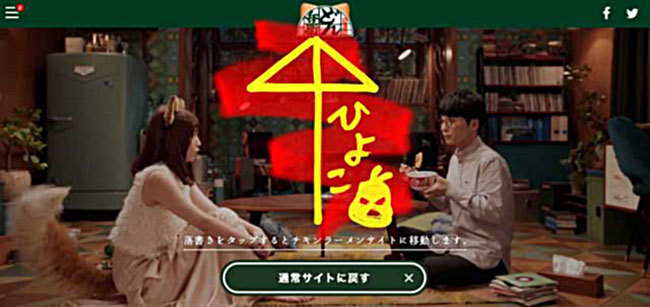
Chick-chan's Graffiti
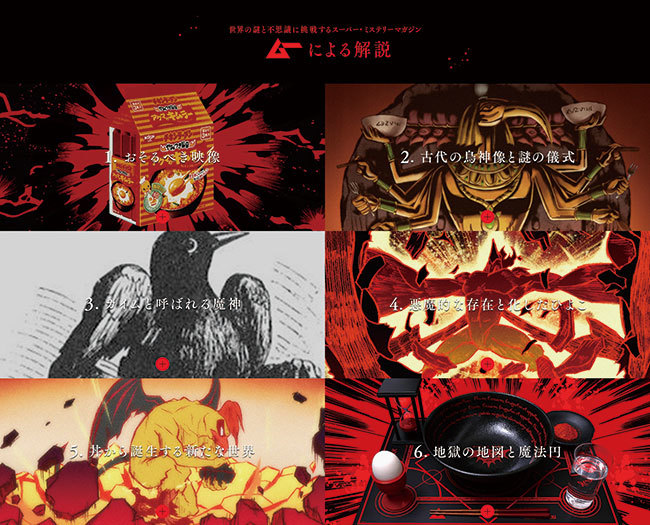
Special Site
What we prioritized was meticulous craftsmanship. Turning such a well-established character into a demon takes courage. Negative reactions might arise. However, I believe that when viewers encounter too many "unclear parts or ambiguous elements," it creates a critical impression. For Chick-chan's transformation, we thought criticism would be less likely if we meticulously depicted the story behind why it happened, provided so much information that no other interpretations were possible, and made it incredibly rich beyond imagination.
In this era where companies and consumers connect, character updates are essential
──What insights did you gain about future advertising through this campaign?
Cases like this, where existing characters are reimagined, will likely increase and may become important for companies. Overseas, KFC's Colonel Sanders transformed into a cool, trendy influencer, creating a huge buzz. Similar trends are happening everywhere, and it seems companies with long-established brands or iconic characters might actually be seeking such initiatives.
Because we now live in an era where companies can communicate directly with consumers through social media and other channels. Companies must create a distinct "someone" to serve as the primary communicator. Moreover, since they are communicating, the character's personality and traits should be meticulously defined. Without this, it becomes difficult to decide what responses to give or what tone to adopt. Without distinctive features, communication becomes generic and struggles to capture people's attention. That said, using the company itself as the communicator heavily relies on the talent of the person managing it. Hence, the character.
Companies creating new characters from scratch are in a good position. But for those with established characters, leveraging them is faster since they're already known. However, older characters often weren't designed with today's consumer communication in mind, so their personalities and backgrounds are frequently underdeveloped.
Updating existing characters to fit the modern era is becoming crucial. This allows companies to retain their existing fanbase while attracting new fans. For companies with long-established characters, now might be the very moment when an upgrade is expected.
──Finally, what kind of creator do you aspire to be in the future?
One goal I have is to create a boom. Compared to the past, it feels like fewer booms start from advertisements. Things like bubble tea suddenly becoming popular or fidget spinners exploding in sales. Booms happen in the world, right? I hope that someday, I can create a boom on that scale.
Beyond that, I fundamentally want to recommend things I genuinely like to others. I want people to love things I loved, like Kochikame. That's how I want to give back. I'm desperately thinking about how to do that. It's very simple, but I'd love to be able to do that kind of work.




